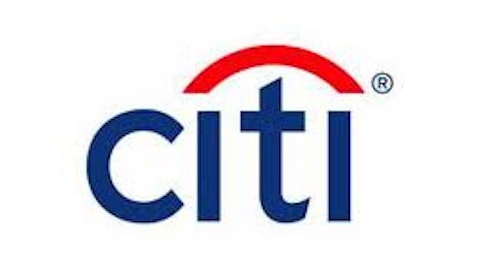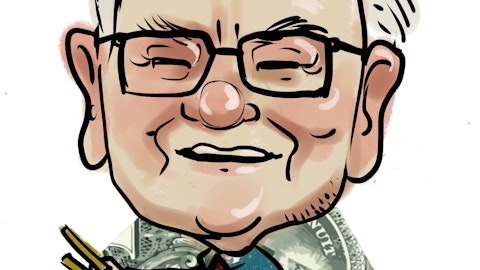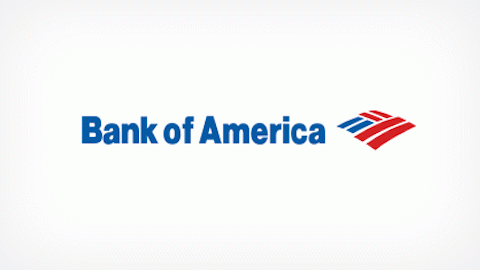According to the Wall Street Journal, the U.S. banking industry posted record profits at the end of the first quarter. The record profits are a signal to the industry’s recovery after the 2008 financial crisis. However, the Federal Deposit Insurance Corp does not support the thesis. It believes the banking recovery is still hampered by a stubbornly low interest rate environment, coupled with a weak demand for loans. Further, it believes the first quarter profits were largely due to one-time items. I believe loans growth is one of the key matrices that define the actual growth in the bank’s results. The remainder of the investment thesis aims to explore the contributions of one-time items in the results of the three largest banks. Also, I will attempt to determine the future outlook of the interest rates.
Banking profits soar
The first quarter of the current year saw a 16% increase in the banking industry’s profits over the prior year. Banks’ profits touched $40.3 billion, with around 31% coming from America’s three largest banks: JPMorgan Chase & Co. (NYSE:JPM), Bank of America Corp (NYSE:BAC), and Citigroup Inc (NYSE:C).
JPMorgan Chase & Co. (NYSE:JPM) reported a 34% year-over-year increase in the profits, while Bank of America Corp (NYSE:BAC) reported a three-fold increase. Citigroup Inc (NYSE:C) also reported a 30% increase in profits over the same time period.
Earnings sustainability
Let’s look at the sustainability of these profits. One way of determining that is to see how much of the profits were coming from one-time items.
On a per-share basis, JPMorgan Chase & Co. (NYSE:JPM) recognized its $1.59 per share earnings were boosted by its reduced mortgage loan-loss reserves and reduced card loan-loss reserves. The boost accounted for around $0.18 in the EPS. So, over 11% of the first quarter’s earnings were due to one-time items. Similarly, 50% of Bank of America Corp (NYSE:BAC)’s first quarter income per share came from one-time items, as the bank reported adjusted EPS of $0.20 per share, while the actual EPS was $0.10 per share.
For Citigroup, the one-time items had a negative impact. This means that, rather than providing support to the bottom line, the one-time items were a source of erosion. Excluding the one-time items, Citigroup’s net income came in at $1.29 per share, compared to $1.23 per share with the one-time items.
Therefore, I see weak earnings sustainability for Bank of America Corp (NYSE:BAC) in particular. However, you can expect Citigroup to continue its current profitability.
Loans growth
I believe solid loans growth is the key to a bank’s future profits. During the first quarter, JPMorgan Chase & Co. (NYSE:JPM)struggled with slow loans growth. Commercial loans witnessed 1.2% growth, compared to 3.6% during the linked quarter, while consumer loans declined 4.2% on a year-over-year basis. Overall, JPMorgan Chase & Co. (NYSE:JPM)’s loans surged a solid 5% over the prior year and 1% over the prior quarter.
Similarly, Bank of America Corp (NYSE:BAC) struggled for growth as its loans plunged 1.3% over the prior quarter. The loans were down 5.2% over the prior year. In the bank’s consumer and business banking, total loans were down 12%.
In contrast, Citigroup reported strong loans growth of 5% over the prior year. More loans during the prior quarter will generate more returns for the bank in the coming quarters. More loans coupled with higher interest rates during the second quarter means ever higher returns for Citigroup.
The Wall Street Journal reports that, in global banking, loans were down 0.9%. However, JPMorgan Chase & Co. (NYSE:JPM) still demonstrated some growth, while Citigroup demonstrated impressive loans growth.
Low rates push banks toward longer-term loans
Banks have been relying on longer-term loans to boost profits. However, the strategy is highly reliant on short-term interest rates, which the banks pay on their deposits. If the rates increase, as they did during the 1980s, this strategy could squeeze bank profits. Therefore, determining the direction of the interest rates is the key to future banking profits.
Yield curve direction
I believe the banks will be entering one of the most favorable banking environments, which will be marked with exceptionally low short-term rates. At the same time, I expect the long-term rates to edge up as the Fed halts the stimulus and the housing and labor markets show further improvements. The future direction of the yield curve is poised to increase the net interest margins of banks, including JPMorgan and Citigroup.
Both have relatively high reliance on mortgages, as they are among the top three players in mortgage originations. Around 43% of JPMorgan’s entire revenue came from interest income, which means an expansion of the margin will significantly help the company. For Bank of America Corp (NYSE:BAC) and Citigroup, this percentage is even higher at 46% and 57%, respectively.
Takeaways
I believe the banks are entering the most favorable environment, where they would benefit from high longer-term interest rates. However, not all banks will be able to benefit from the situation. I believe Citigroup and JPMorgan are best positioned to benefit from the developing environment and will continue to post better results, while conditions at Bank of America are not encouraging. It will be hard for Bank of America to post an increase in the bottom line at the end of the second quarter.
The article Banks Will See More Profits originally appeared on Fool.com.
Adnan Khan has no position in any stocks mentioned. The Motley Fool owns shares of Bank of America, Citigroup Inc (NYSE:C) , and JPMorgan Chase & Co (NYSE:JPM). Adnan is a member of The Motley Fool Blog Network — entries represent the personal opinion of the blogger and are not formally edited.
Copyright © 1995 – 2013 The Motley Fool, LLC. All rights reserved. The Motley Fool has a disclosure policy.





